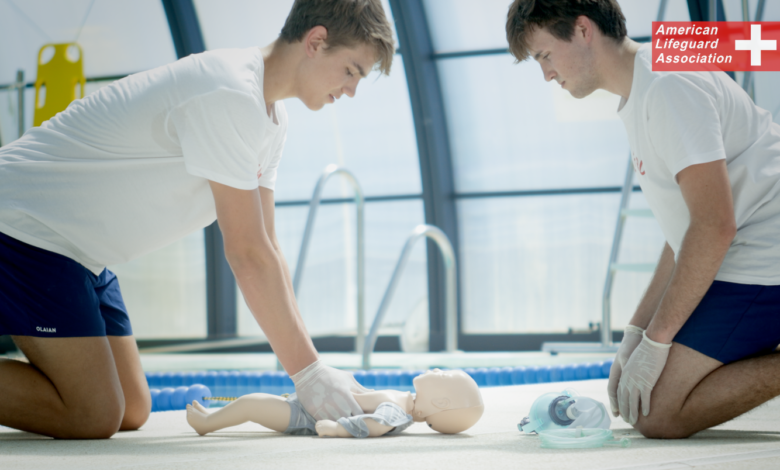How to Enroll in Lifeguard Classes

Turning into a lifeguard requires thorough training and certification. Here is an extensive guide on how to enroll in lifeguard classes, ensuring you are good to go to safeguard swimmers in different aquatic environments.
Researching Lifeguard classes Near Me
Begin your process by researching accessible lifeguard classes in your territory. Use online web indexes, community release sheets, or ask at nearby pools, recreation focuses, and educational institutions. Search for authorize programs that meet industry standards for lifeguard certification.
Checking Eligibility Requirements
Before enrolling in any lifeguard class, survey the eligibility rules. Most programs expect participants to be no less than 15 years of age, have basic swimming skills, and in some cases, hold an ongoing CPR certification. Guarantee you meet these essentials to qualify for the training.
Contacting Course Providers
Once you’ve identified potential course providers, contact them straightforwardly for point by point information. Ask about course schedules, expenses, and enrollment strategies. Numerous providers offer adaptable booking options to oblige different understudy needs, for example, night or end of the week classes.
Reviewing Course Curriculum
Completely examine the curriculum of every lifeguard class you are considering. A complete program ought to cover essential subjects, for example, water rescue techniques, first aid, CPR (Cardiopulmonary Resuscitation), AED (Automated External Defibrillator) utilization, and emergency response protocols. Verify that the course content lines up with the latest business standards and certification requirements.
Understanding Time Commitments
Comprehend the time commitment expected for lifeguard classes. Search online for the lifeguard classes near me Ordinarily, these courses range a little while, consolidating classroom instruction with practical hands-on training in water rescue techniques. Assess the duration of each class session and the general length of the course to guarantee it accommodates your schedule.
Registering for Classes
Once you’ve picked a reasonable lifeguard class, continue with the registration interaction. Complete any important enrollment shapes and submit payment as per the provider’s instructions. Early registration is fitting, as classes frequently top off rapidly, particularly during top swimming seasons.
Getting ready for the Swim Test
Set yourself up physically for the swim test, a standard requirement in lifeguard training. The swim test evaluates your swimming capability, endurance, and solace in the water. Practice different swimming strokes and techniques routinely to assemble endurance and confidence before the test day.
Attending Classroom Sessions
Attend all scheduled classroom sessions industriously. These sessions cover theoretical parts of lifeguarding, including water safety rules, hazard recognition, legal responsibilities, and compelling communication methodologies. Take nitty gritty notes during addresses and effectively partake in discussions to upgrade your understanding.
Taking part in Practical Training
Connect sincerely in practical training sessions conducted in controlled aquatic environments. Practical training permits you to apply theoretical information to genuine scenarios, rehearsing water rescues, casualty assessment, and teamwork under the direction of experienced instructors. Utilize this potential chance to refine your skills and gain confidence in emergency response situations.
Completing Written Exams
Plan completely for written exams that assess your understanding of lifeguarding standards and strategies. Concentrate on course materials, audit safety protocols, and work on addressing test exam questions to guarantee preparation. Written exams normally cover points like first aid techniques, injury prevention, risk assessment, and the role of a lifeguard in keeping up with swimmer safety.
Completing Practical Assessments
Effectively complete practical assessments to demonstrate your capability in lifeguarding skills. Practical assessments include simulated rescue scenarios where you should apply learned techniques, survey casualty conditions, and direct fitting first aid measures. Play out these assignments precisely and effectively to meet certification requirements.
Getting Certification
Upon satisfying all course requirements and passing assessments, you will accept your lifeguard certification. This certification approves your capacity to perform essential lifeguard duties and is recognized nationally. Certifications are ordinarily legitimate for one to three years, contingent upon the responsible organization’s guidelines.
Continuing Education and Recertification
Remain refreshed with ongoing education chances to keep up with and improve your lifeguard certification. Lifeguards are urged to take part in continuing education courses that cover new developments in lifeguarding techniques, safety protocols, and emergency response procedures. Recertification might be required intermittently to guarantee your skills stay current and powerful.
Joining the American Lifeguard Association
Consider joining the American Lifeguard Association (ALA) for additional help and professional development open doors. The ALA gives assets, training programs, and support for lifeguards across the US. Membership offers admittance to systems administration occasions, job placement help, and updates on industry standards.
Enrolling in lifeguard classes is a critical stage towards obtaining the skills and information important to guarantee swimmer safety in aquatic environments. By following these means and focusing on extensive training, you can leave on a rewarding career as a certified lifeguard, prepared to respond really in emergencies and safeguard lives.




